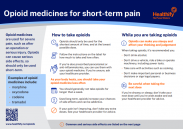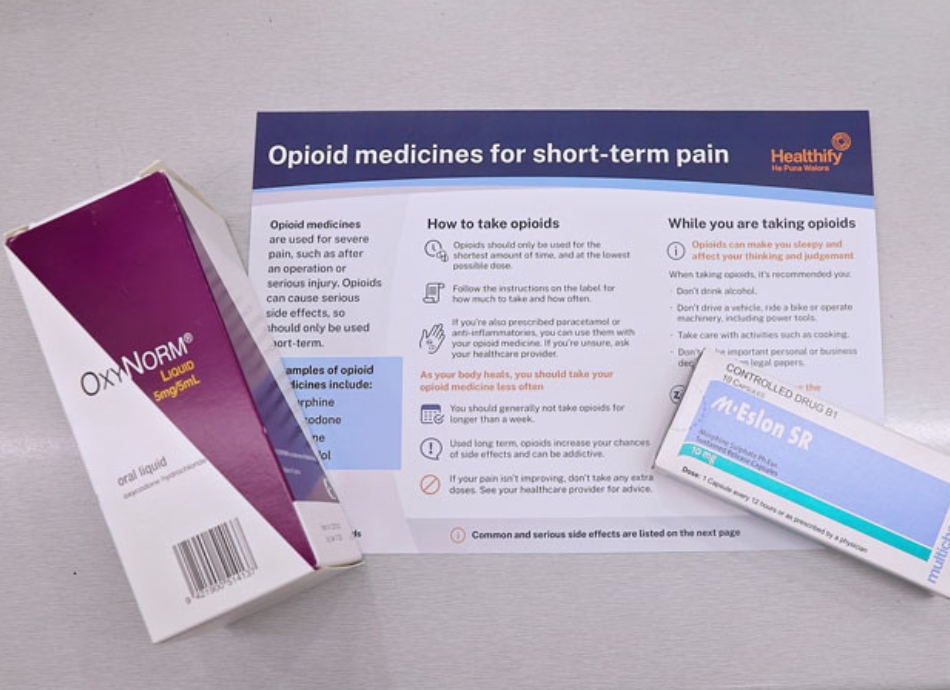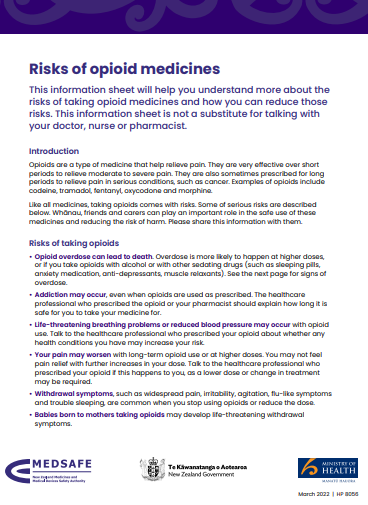Opioid medicines are used for severe pain, such as after an operation or serious injury. Opioids can cause serious side effects, so should only be used short-term.
- Opioids work by binding to certain receptors in your brain and spinal cord. This decreases pain and your reaction to pain and increases your tolerance for pain.
- Opioids are prescribed when weaker pain medicines alone don't work well enough. See pain relief medications and opioids in palliative care.
- Opioids are not recommended for the treatment of chronic (ongoing) pain that's not related to cancer. They're not very effective for chronic pain, and there are risks of side effects and addiction. Read more about chronic pain.
Examples of opioids available in Aotearoa New Zealand
Opioids are divided into 2 groups – weak and strong opioids.
| Weak opioids | Strong opioids |
Factsheet: Opioids for short-term pain
 |
Opioid medicines for short-term pain factsheet |
Opioids are available in different formulations
Opioids are available in different formulations, such as:
- a liquid or syrup
- quick-acting tablets and capsules
- slow-release tablets and capsules
- patches to put on your skin
- injections – which may be under your skin, into a vein or into a muscle.
Which opioid is best for me?
In Aotearoa New Zealand, opioids are available only on prescription. Your doctor will discuss the best option for you. There are many things that affect the choice of opioids, including the intensity and type of pain.
- Intensity of your pain: The weaker opioids such as codeine or dihydrocodeine are best for moderate pain, while the stronger opioids are used for more severe pain. The strong opioids differ a lot in strength; some of them are 10 times stronger than weaker opioids.
- Type of pain: Quick-acting tablets and capsules or liquids start working quickly to ease pain and are useful to treat sudden pain. Slow-release tablets and skin patches release the medicine slowly over several hours to give more even pain control. They're used when continuous pain relief is required. Injections may be used when tablets, capsules or liquids can't be taken or if immediate pain relief is needed.
Read more about opioids in palliative care.
Video: Opioids for short-term pain








